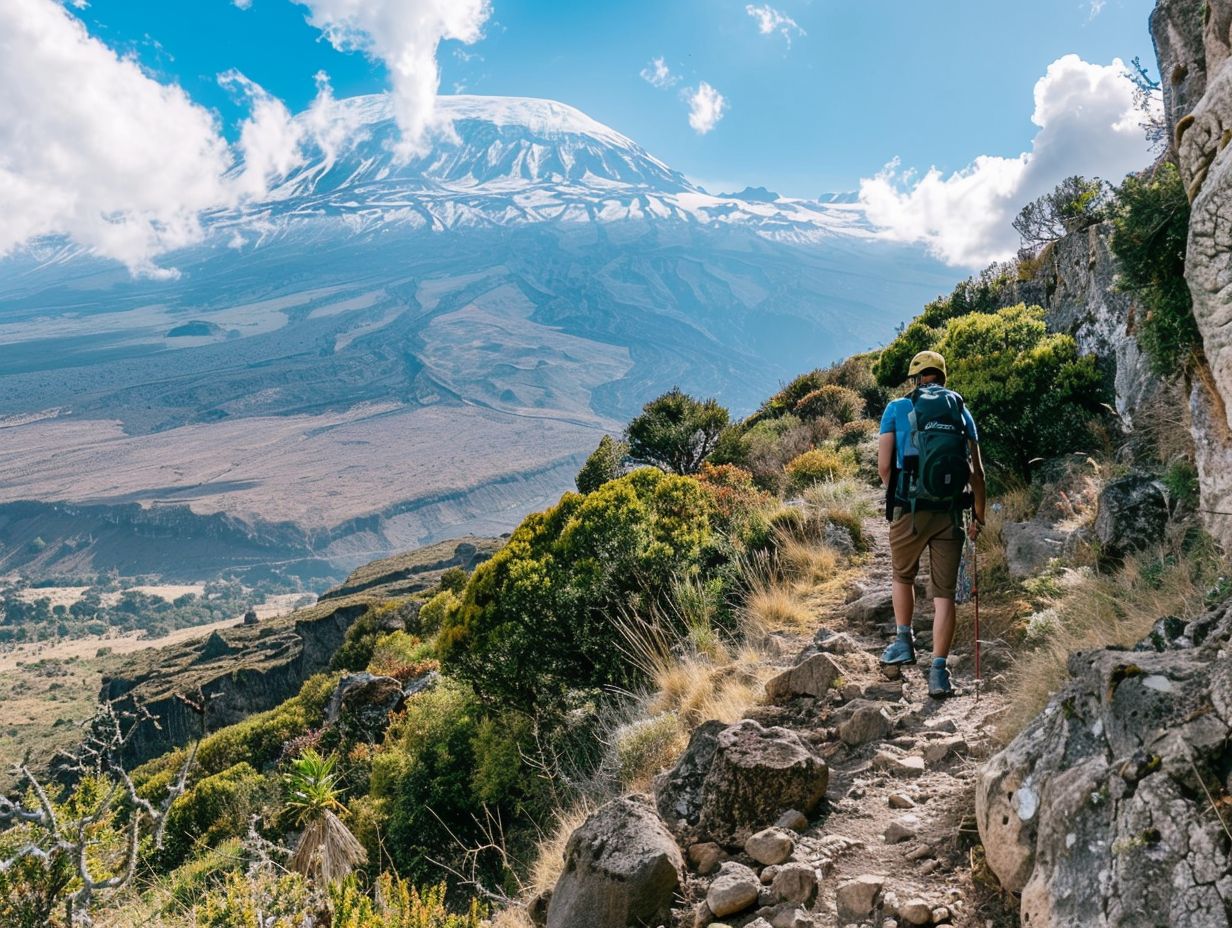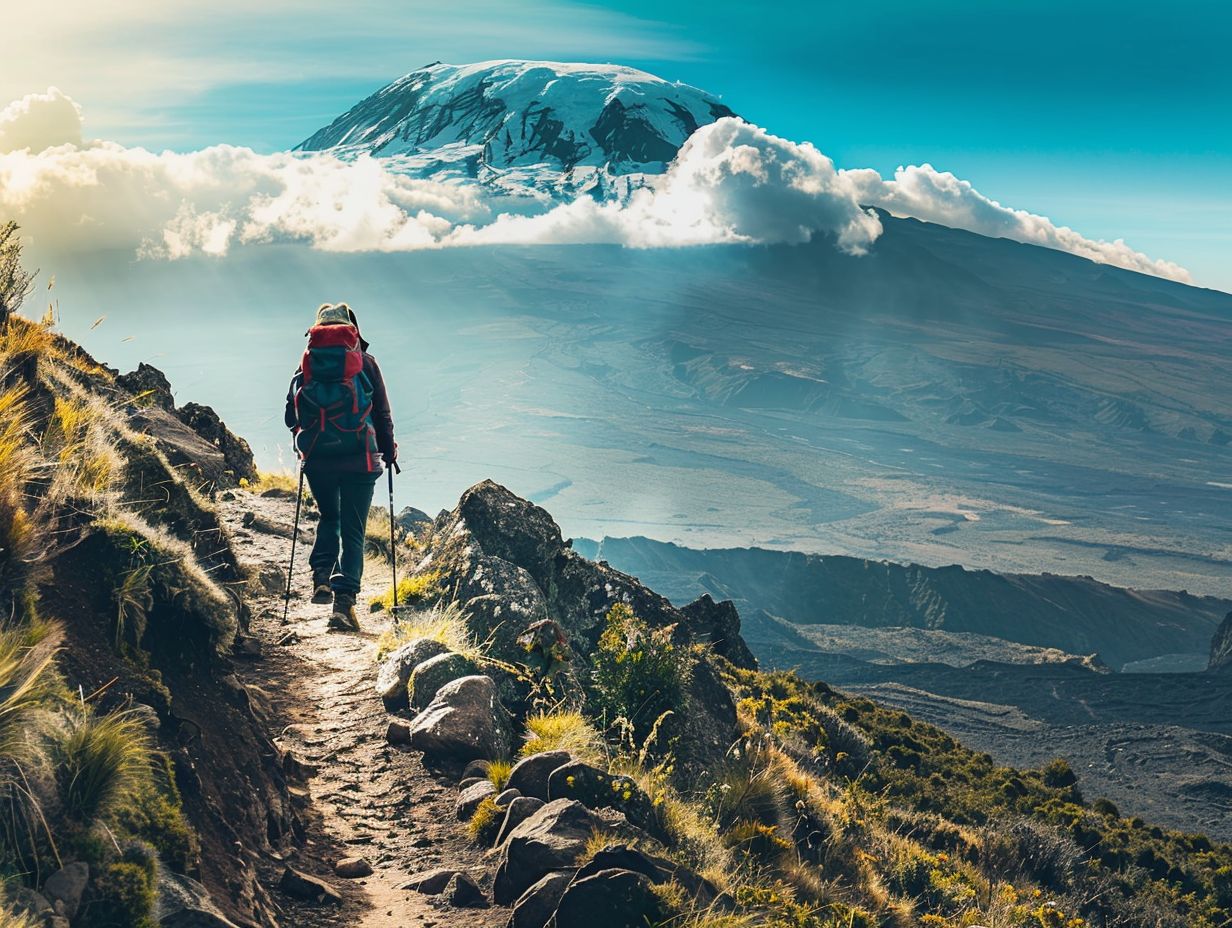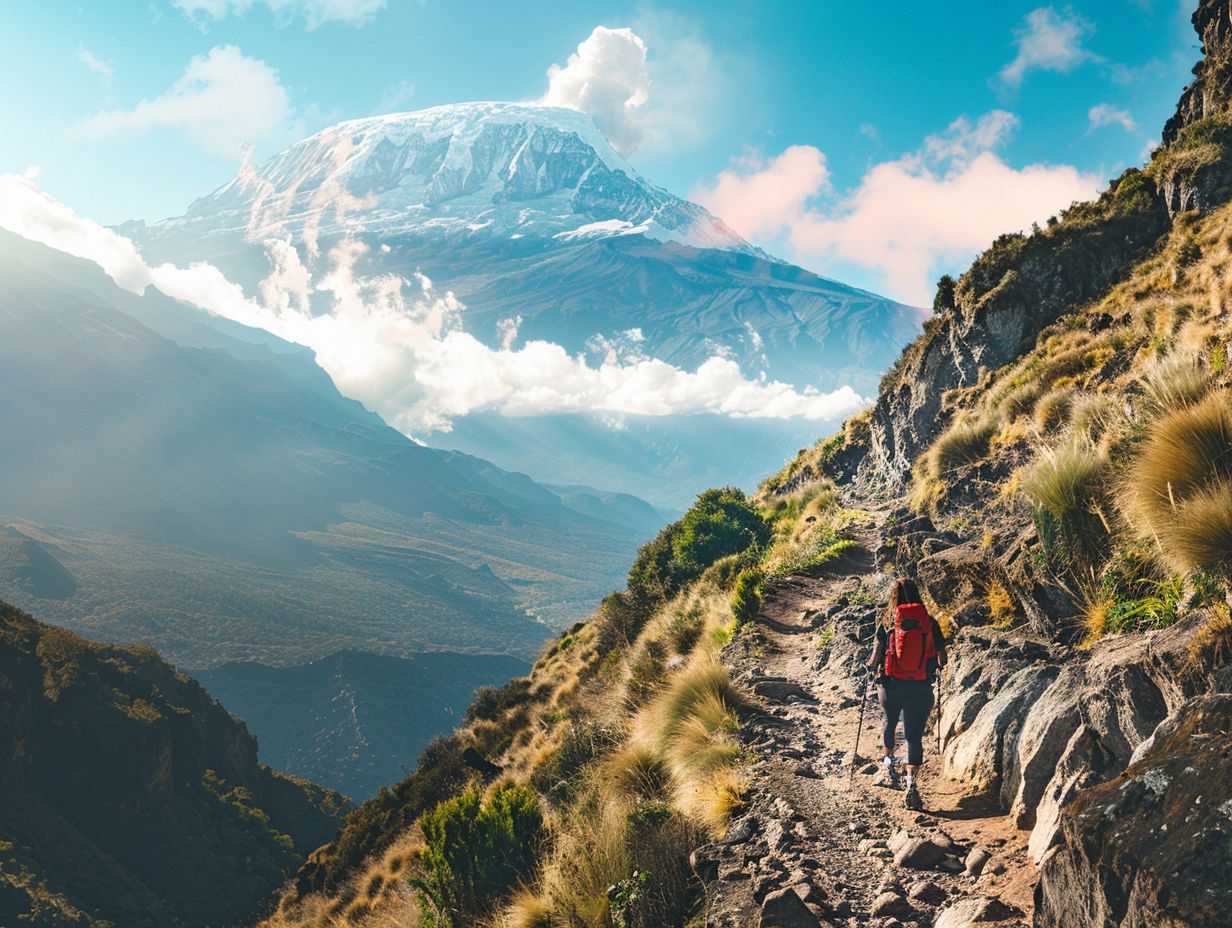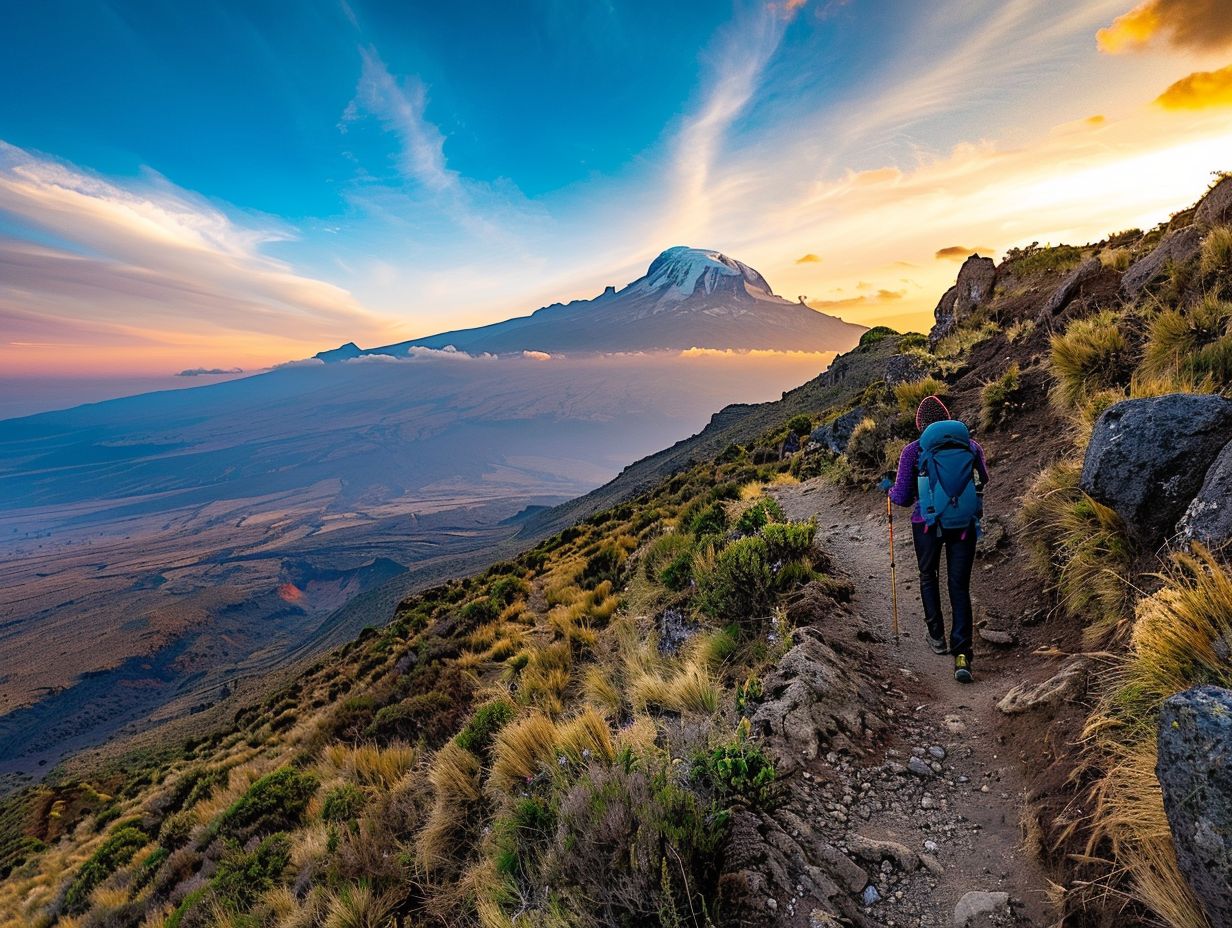
Climbing Mount Kilimanjaro is a daunting challenge that requires both physical and mental preparation.
We will explore the difficulty level of climbing Kilimanjaro, the physical demands of the journey, and the altitude you will be facing.
We will also discuss the crucial training needed to conquer this majestic peak, including recommended training plans and essential exercises.
Delve into the gear required, mental challenges you may encounter, and tips on how to overcome them.
If you’re wondering whether training is necessary for climbing Kilimanjaro, read on to find out!
Key Takeaways:

- Proper physical training is essential for climbing Kilimanjaro due to its high altitude and physical demands.
- A recommended training plan should include cardiovascular exercises, strength training, and hiking practice with a gradual increase in intensity and duration.
- Mental preparation is also crucial for climbing Kilimanjaro, as it can be mentally challenging to push through the physical obstacles and high altitude.
What is the Difficulty Level of Climbing Kilimanjaro?
Climbing Kilimanjaro presents a significant challenge due to its high altitude and demanding terrain, requiring climbers to be adequately prepared physically and mentally.
One of the primary factors that contribute to the difficulty of climbing Kilimanjaro is the altitude effects that climbers experience as they ascend towards the summit.
As altitude increases, the air becomes thinner, leading to lower oxygen levels and resulting in symptoms like headache, nausea, and fatigue – collectively known as altitude sickness. Proper acclimatization is crucial to mitigate these effects and ensure a safer ascent.
What are the Physical Demands of Climbing Kilimanjaro?
The physical demands of climbing Kilimanjaro are immense, requiring high levels of endurance, strength, cardiovascular fitness, and aerobic capacity to tackle the steep inclines and long hours of trekking.
Endurance is crucial for climbers to withstand the grueling pace and altitude changes, often facing unpredictable weather conditions that can test their mental and physical resilience. Strength plays a significant role in navigating challenging terrains and carrying essential gear up the mountain. Cardiovascular fitness is essential to cope with the decreased oxygen levels at higher altitudes, aiding in proper oxygen delivery to muscles. Adequate aerobic capacity enhances overall performance and helps prevent fatigue and altitude sickness, ensuring a successful ascent.
What is the Altitude of Kilimanjaro?
The altitude of Kilimanjaro is a critical factor to consider, as the mountain’s peak reaches an elevation of [ADD ALTITUDE], which significantly affects climbers’ oxygen levels and overall physical performance.
Kilimanjaro’s altitude poses a unique challenge due to the reduced barometric pressure at higher elevations. As climbers ascend, the air becomes thinner, leading to decreased oxygen levels, which in turn can result in symptoms of altitude sickness, such as headaches, nausea, and fatigue.
The reduced oxygen at higher altitudes can significantly impact physical performance, making even simple tasks more strenuous. Climbers must acclimatize properly, which involves slow ascent rates and adequate hydration to mitigate the effects of altitude on their bodies.
How Much Training is Needed for Climbing Kilimanjaro?
Training for a Kilimanjaro climb is crucial to build the necessary strength, endurance, and aerobic capacity needed to tackle the demanding trek and carry essential gear.
To prepare adequately for the Kilimanjaro climb, experts recommend starting training at least 3-6 months in advance. This allows climbers to gradually build up their fitness levels and acclimatize to the altitude challenges they will face. Incorporating a mix of cardiovascular exercises such as hiking, running, and cycling into your routine is essential to improve endurance and aerobic capacity.
Along with cardio, it’s crucial to include strength training to strengthen muscles needed for the climb, especially legs and core. Focus on exercises that target quads, hamstrings, calves, and core muscles to help support your body during the ascent.
Regarding packing gear, lightweight and breathable clothing is key to staying comfortable on the mountain. Layers are essential to adjust to changing temperatures, while sturdy hiking boots, a good quality backpack, trekking poles, and a warm sleeping bag are among the gear necessities for the Kilimanjaro trek.
What is the Recommended Training Plan for Climbing Kilimanjaro?

A well-rounded training plan for climbing Kilimanjaro should include a mix of aerobic exercises, uphill treadmill sessions, and strength conditioning to prepare the body for the rigors of the climb.
Starting with aerobic exercises such as running, cycling, or swimming is crucial to improve cardiovascular endurance and stamina, key factors in conquering the altitude challenges of Kilimanjaro.
Incorporating uphill training, whether on a treadmill set to incline or outdoor hill repeats, helps simulate the steep ascents of the mountain.
Focusing on strength conditioning through bodyweight exercises, weight training, and core workouts enhances overall muscle strength and stability, crucial for carrying a backpack and navigating various terrains during the climb.
What Types of Exercises Should be Included in Training?
Training for Kilimanjaro should incorporate a mix of weight training to build strength, endurance exercises to improve stamina, and cardiovascular activities to enhance overall fitness levels.
Weightlifting is crucial for developing the required muscle strength essential for navigating Kilimanjaro’s challenging terrains. Along with weightlifting, incorporating activities like hiking, running, or cycling can significantly boost stamina, allowing climbers to endure long hours of trekking at high altitudes.
Engaging in activities such as swimming, cycling, or aerobics can be beneficial for enhancing cardiovascular fitness, enabling climbers to cope with the demands of the mountain’s steep slopes.
How Long Should Training Last?
The duration of training for a Kilimanjaro climb can vary but typically spans several weeks to ensure climbers reach optimal fitness levels and are adequately prepared for the ascent.
Consistent training over a period of several weeks is crucial in building the endurance, strength, and mental resilience needed to tackle the challenges of climbing Kilimanjaro. It allows climbers to gradually adapt their bodies to the physical demands of high-altitude trekking, reducing the risk of altitude sickness and increasing their chances of a successful summit attempt.
Training regimens often include a mix of cardio, strength training, and altitude simulation exercises to simulate the conditions faced during the climb.
By dedicating time each week to focused training, climbers can not only improve their fitness levels but also enhance their overall readiness for the demanding journey ahead.”
What Gear is Needed for Climbing Kilimanjaro?
Having the right gear is essential for a successful Kilimanjaro climb, including appropriate clothing to combat varying weather conditions and essential equipment to ensure safety and comfort during the trek.
For clothing, layers are crucial when packing for Kilimanjaro. Be prepared with moisture-wicking base layers to keep you dry, insulating mid-layers to retain body heat, and waterproof outer layers to shield you from rain and wind. Don’t forget to bring a warm hat, gloves, and sturdy hiking boots to protect yourself from the elements.
Regarding equipment, a well-fitted backpack, sturdy trekking poles, a reliable headlamp, and a high-quality sleeping bag are all must-haves for your journey. Consider investing in a good quality tent, sleeping pad, and a portable water filtration system to enhance your camping experience.
Prioritize checking your gear before the climb, ensuring everything is in good working condition. Break in your hiking boots, test your headlamp, and make sure your tent is set up correctly. Being well-prepared with the right gear can make all the difference in the challenging terrain of Kilimanjaro.”
What Clothing is Essential for Climbing Kilimanjaro?
The clothing for a Kilimanjaro climb should include layers for temperature regulation, moisture-wicking fabrics, sturdy hiking boots, and waterproof outerwear to protect against changing weather conditions.
Effective layering is crucial for adapting to the varying temperatures encountered during the trek. Base layers made from merino wool or synthetic materials help regulate body heat and wick away sweat, while insulating layers provide warmth. A windproof and waterproof jacket is essential to shield from rain and strong winds at higher altitudes.
Moisture management is key to staying comfortable and avoiding hypothermia. Choose quick-drying fabrics that move sweat away from the skin, reducing the risk of chafing and blisters. Investing in high-quality hiking socks can also prevent moisture build-up and keep feet dry.
Proper footwear is paramount for stability and avoiding injuries. Opt for well-fitted, sturdy hiking boots with ankle support and excellent traction. Break them in before the climb to prevent discomfort and blisters.
What Equipment is Necessary for Climbing Kilimanjaro?

Key equipment required for a Kilimanjaro climb includes a sturdy backpack, sleeping bag, trekking poles, headlamp, water bottles, and high-altitude gear to ensure climbers are well-prepared for the journey.
A good quality tent to provide shelter during overnight stays, a reliable water purification system to ensure safe drinking water, and appropriate clothing for variable weather conditions such as insulated layers and waterproof gear are crucial for a successful ascent.
Proper footwear with ankle support and grippy soles is essential to navigate challenging terrain comfortably. Bringing along energy-rich snacks and a portable stove for hot meals can help maintain energy levels during the strenuous trek.
Altitude sickness medication, a first aid kit, and communication devices like a satellite phone should be part of the essential gear to mitigate risks and ensure safety on the climb.
How to Prepare Mentally for Climbing Kilimanjaro?
Mental preparation is key for a successful Kilimanjaro climb, as climbers must navigate various challenges, uncertainties, and altitude-related stresses throughout the journey.
One of the most crucial aspects of mental readiness is understanding the psychological challenges that climbers may face when ascending the iconic peak. The mental fortitude required to persevere through physical exhaustion, extreme weather conditions, and the effects of high altitude cannot be overstated.
To combat these obstacles, climbers often employ strategies such as visualization techniques, mindfulness practices, and positive self-talk to maintain focus and motivation during the climb.
What are the Mental Challenges of Climbing Kilimanjaro?
The mental challenges of climbing Kilimanjaro include altitude sickness, isolation, fatigue, and the psychological strain of summiting a high-altitude peak, all of which require mental resilience and coping strategies.
Altitude-induced issues can manifest as dizziness, headaches, and nausea, impacting climbers’ focus and physical performance. The feeling of isolation, surrounded by the vast expanse of the mountain, can trigger moments of doubt and introspection. The physical fatigue coupled with psychological stressors like fear of failure and uncertainty about reaching the summit add layers to the climbers’ mental hurdles.
To overcome these challenges, climbers often employ mindfulness techniques, focusing on the present moment rather than the daunting task ahead. Visualization exercises, where climbers imagine themselves successfully reaching the summit, can bolster their confidence and motivation.
Group camaraderie and support play a crucial role in lifting spirits and sharing the burden of mental stress. Mental preparedness through prior research and understanding of the psychological aspects of high-altitude climbing can equip climbers with coping mechanisms for the journey.
How to Overcome Mental Obstacles?
To overcome mental obstacles when climbing Kilimanjaro, climbers can use visualization techniques, positive affirmations, teamwork, and mental conditioning exercises to stay focused, motivated, and resilient throughout the journey.
Visualization can be a powerful tool to mentally prepare for the demanding ascent. By envisioning the route, the summit, and successful outcomes, climbers can create a positive mindset that drives their actions.
Positive affirmations play a crucial role in boosting confidence and managing self-doubt. Simple phrases like ‘I am strong’ or ‘I can do this’ can help in maintaining motivation when faced with challenges.
Teamwork dynamics on a Kilimanjaro expedition are essential. Supporting fellow climbers, sharing responsibilities, and fostering a sense of camaraderie can bring a strong sense of unity and cooperation.
Conclusion: Is Training Necessary for Climbing Kilimanjaro?
Training is absolutely essential for climbing Kilimanjaro as it not only prepares climbers physically and mentally for the challenges ahead but also enhances their safety, endurance, and overall enjoyment of the trek.
Proper training is the foundation upon which successful climbs are built; not only does it help climbers build necessary strength and stamina, but it also familiarizes them with the techniques crucial for navigating the rocky terrains and unpredictable weather conditions of Kilimanjaro.
Training also plays a pivotal role in acclimatizing climbers to the high altitude, reducing the risks associated with altitude sickness and ensuring a smoother climb to the summit.
Frequently Asked Questions

How Much Training Is Needed For Kilimanjaro?
The amount of training needed for Kilimanjaro varies depending on individual fitness levels and experience. However, it is generally recommended to start training at least 3-4 months before the climb.
What type of training should I do for Kilimanjaro?
To prepare for Kilimanjaro, it is important to focus on cardio exercises such as hiking, running, and cycling to improve endurance. Additionally, strength training for your legs and core can also be beneficial.
How often should I train for Kilimanjaro?
It is recommended to train at least 3-4 times a week for Kilimanjaro. This should include a mix of cardio and strength training to increase your fitness and endurance levels.
Do I need any previous climbing experience to train for Kilimanjaro?
No, previous climbing experience is not necessary to train for Kilimanjaro. However, it is important to have a good level of fitness and be mentally prepared for the challenge.
What is the main goal of training for Kilimanjaro?
The main goal of training for Kilimanjaro is to improve your fitness and endurance levels so that you are physically and mentally prepared for the climb. This will also help to reduce the risk of altitude sickness.
Is it possible to train for Kilimanjaro while working a full-time job?
Yes, it is possible to train for Kilimanjaro while working a full-time job. You may need to adjust your training schedule and make time for longer hikes on weekends, but it is important to be consistent with your training to see results.